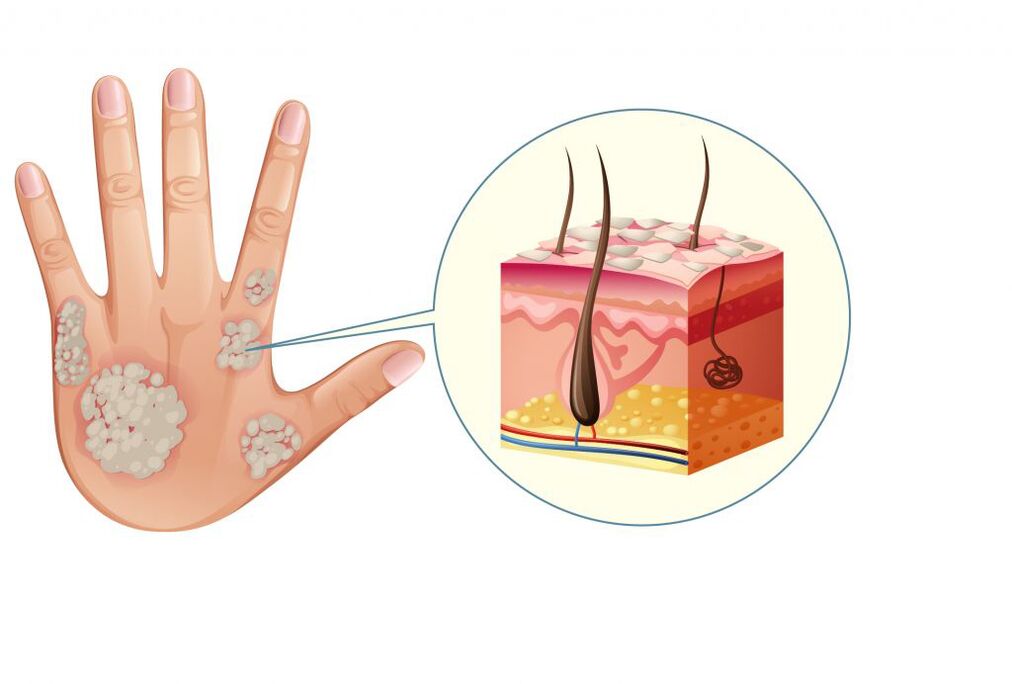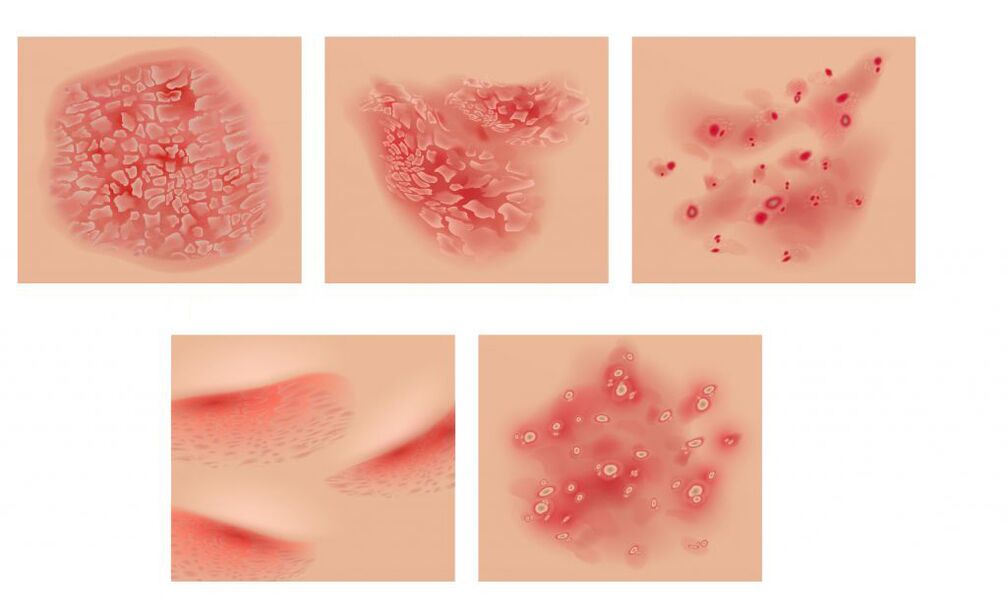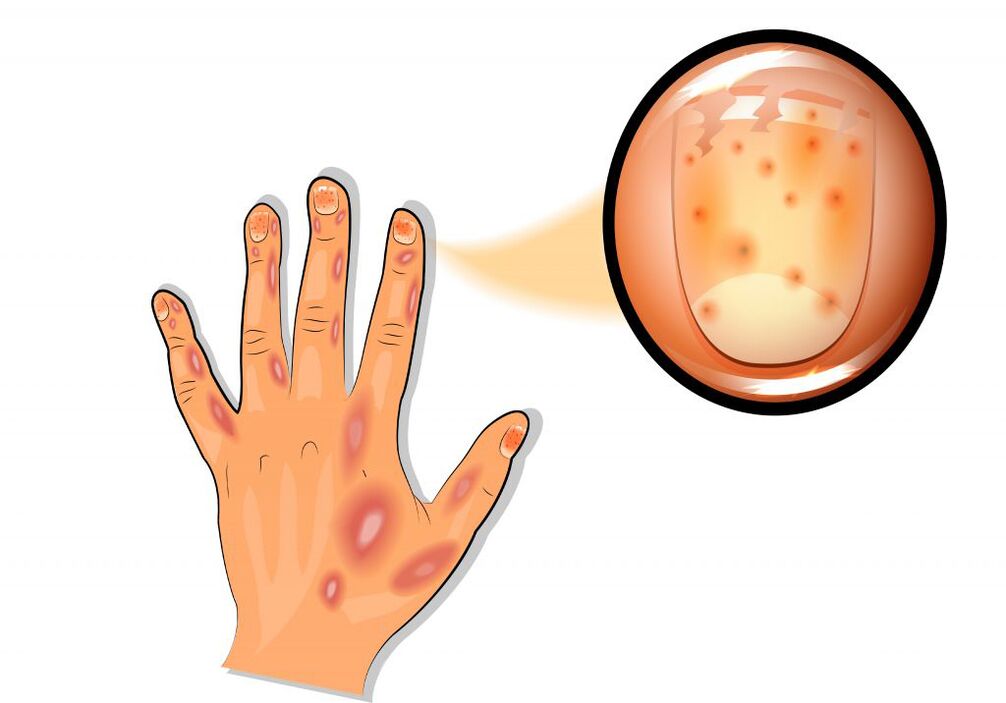Psoriasis: causes, symptoms, diagnosis and treatment.
Psoriasis is a chronic non-communicable disease that can affect various organs: skin, joints, heart, kidneys.
Most often, mild psoriasis appears on the skin as well-defined pinkish-red papules (nodules that rise above the surface of the skin), which coalesce into plaques with silvery-white scales.
In moderate and severe forms of the disease, the inflammatory process leads to damage to the musculoskeletal system and the cardiovascular system. Psoriasis has a recurrent course (reappearance of symptoms after complete or partial recovery) and a tendency to cause comorbidities that alter the quality of life of patients.
Causes of Psoriasis
The disease can be based on several triggers. However, it is still unclear which of them are primary and which are secondary. Dysfunction of the immune system is considered to be the first cause explaining the occurrence of psoriasis. Cells aiming to destroy pathogens start attacking their own cells (mainly the skin). As a result, an inflammatory process develops, which causes accelerated cell division of the epidermis (epidermal hyperplasia) and the formation of psoriatic papules and plaques.

An inadequate immune response is most often due to genetic characteristics.
Psoriasis is very often hereditary.
Currently, more than 40 chromosomal regions associated with the risk of developing psoriasis have been identified. The onset of the disease can be caused by a weakening of the immune system against the background of stress, infectious and endocrine diseases. Psoriasis often accompanies allergic and immunodeficiency states, which are based on a violation of the immune response. In addition, psoriasis can be triggered by certain medications (antidepressants, beta-blockers, nonsteroidal anti-inflammatory drugs).
Classification of psoriasis
Depending on the localization of the pathological process, different types of psoriasis are distinguished. The most common is vulgar, orcommon, psoriasiswhen well-defined pink papules appear on the skin, which merge into plaques covered with silvery-white scales. In case of scalp involvement (seborrheic psoriasis) rashes in the form of yellowish scales can descend on the forehead, forming a seborrheic "crown". In patients with metabolic disorders, plaques may present with exudate, a fluid secreted during inflammatory processes (exudative psoriasis). In childhood and adolescence, particularly after streptococcal infections, the disease may become acute, with numerous bright red teardrop-shaped papules appearing on the skin with mild scaling and infiltration (guttate psoriasis). Sometimes there is pustular psoriasis, which is characterized by the appearance of pustules against the background of reddened skin, most often in the arch or palms.Psoriatic erythrodermacan occur against the background of exacerbation of ordinary psoriasis under the influence of provoking factors. Dry white scales cover the skin, it becomes bright red, swollen and warm to the touch. Works very stronggeneralized Zumbusch psoriasis. It is characterized by the fact that small purulent vesicles appear on the reddened skin, which, merging, form "purulent lakes".Psoriatic arthritisaccompanied by damage to the joints and develops simultaneously with rashes or precedes them.

Psoriasis symptoms
The cutaneous form of psoriasis is accompanied by the appearance of bright pink dotted papules, sometimes in the form of droplets. Merging together, they form plates covered with silvery-white scales.
Rashes are located on the extensor surfaces of the arms and knee joints, scalp, lower back and sacrum.
The upper layer of the plaques is formed by scales of dead epidermis that are easily removed. Initially, they occupy the center of the plate, then fill its entire surface. When the scales are removed, a shiny bright red surface is revealed. Sometimes the plaque is surrounded by a pink rim - an area of additional growth, while the surrounding skin does not change. The rash is accompanied by intense itching. With psoriatic erythroderma, patients develop fever (fever with chills) and severe itching against the background of rashes all over the skin, and the lymph nodes increase.
With a long course of the disease, hair and nails may fall out.
Generalized Zumbusch psoriasis is very difficult. Purulent rashes cover the entire skin and are accompanied by high fever and intoxication. Psoriatic joint lesions are characterized by pain and redness of the skin on the joint surfaces. Any movement is difficult, inflammation of the ligaments and tendons develops. With psoriasis, the nail plates are very often affected, while pinpoint depressions appear on the surface of the nail (the "thimble" symptom).

Small reddish and yellowish-brown spots appear under the nail plate at the base (symptom of "oil spot"). Dystrophic nail and hair changes often develop.
In children, especially infants, the symptoms of psoriasis have their own specifics.
In the area of redness that occurs in the skin folds, effusion and slight peeling of the upper layer of the epidermis may occur. This picture looks like diaper rash or candidiasis. Sometimes rashes appear on the skin of the face or in the genital area.
Diagnosis of psoriasis
It is possible to identify the disease on the basis of the symptoms of the psoriatic triad (white stearic surface of the papule; reddish shiny film after the peeling of the scales and a localized protrusion of blood after its removal).
An additional characteristic is the Koebner phenomenon. It lies in the fact that in the area of skin irritation, after 7-12 days, erythematous-scaly rashes appear (areas of redness and peeling in the area of scratches, scratches). Sometimes, to confirm the diagnosis, a histological examination of a biopsy of the affected skin area is performed. In addition, a clinical and biological examination is necessary: a clinical blood test, a biochemical blood test (total protein, protein fractions, C-reactive protein, ALT, AST, LDH, creatinine, electrolytes: potassium, sodium, chlorine, calcium).
Which doctors to contact
If rashes appear, which often occur against the background of infectious diseases, skin lesions, stress, you should consult a therapist or dermatologist. In case of systemic damage to the patient's body, he can be referred to an ophthalmologist, endocrinologist, gynecologist or other specialists.
Processing
Psoriasis affects both the skin and the musculoskeletal system, as well as internal organs. When rashes appear only on the skin, local preparations of glucocorticosteroids, ointments containing synthetic analogues of vitamin D3, activated zinc, salicylic acid and other components are recommended. Hormonal creams should be used with caution on skin prone to atrophy.
It is necessary to take into account the possibility of hormonal disorders with prolonged use of steroid creams.
The effectiveness of hormonal creams is increased in combination with salicylic acid, analogues of vitamin D. For the treatment of severe forms of psoriasis, second-generation aromatic retinoids, based on acitretin, are used. The drug slows down the proliferation of epidermal cells, normalizes the process of keratinization and has an immunomodulating effect. Phototherapy (medium wave UV therapy and PUVA) in combination with retinoids is also recommended. As a systemic therapy, the doctor may prescribe immunosuppressive agents. If necessary, prescribe detoxification and desensitization therapy, plasmapheresis.
Psoriasis Complications
In 10% of patients, psoriatic arthritis develops, affecting the spine, joints of the arms and legs. Patients suffer from joint pain and morning stiffness. Features of psoriatic arthritis include asymmetry of the places of its manifestation, which can be associated with damage to the nails. Psoriasis is often accompanied by concomitant or comorbid diseases.
Due to inflammatory vascular damage, the risk of coronary heart disease and stroke increases.
It is also possible to develop diabetes and Crohn's disease. In some cases, the complications of psoriasis can lead to disability.
Prevention of psoriasis
Psoriasis prevention measures are primarily aimed at strengthening the immune system. Skin care should include hydration and nutrition. With a predisposition to allergies, it is necessary to control nutrition, avoiding fatty and spicy foods, excessive consumption of carbohydrates, potatoes. A mandatory element of the prevention of psoriasis should be vitamin therapy.
In addition, the functioning of the immune system largely depends on the state of the nervous system. People who are hyper-responsible, who have a busy work schedule and who experience a constant negative psycho-emotional impact are more prone to autoimmune diseases, including psoriasis. Therefore, the prevention of psoriasis, combined with physical healing measures (abandonment of bad habits, physical activity), should also achieve psycho-emotional comfort.
IMPORTANT!
The information in this section should not be used for self-diagnosis or self-treatment. In case of pain or other exacerbation of the disease, only the attending physician should prescribe diagnostic tests. For proper diagnosis and treatment, you should contact your doctor.























